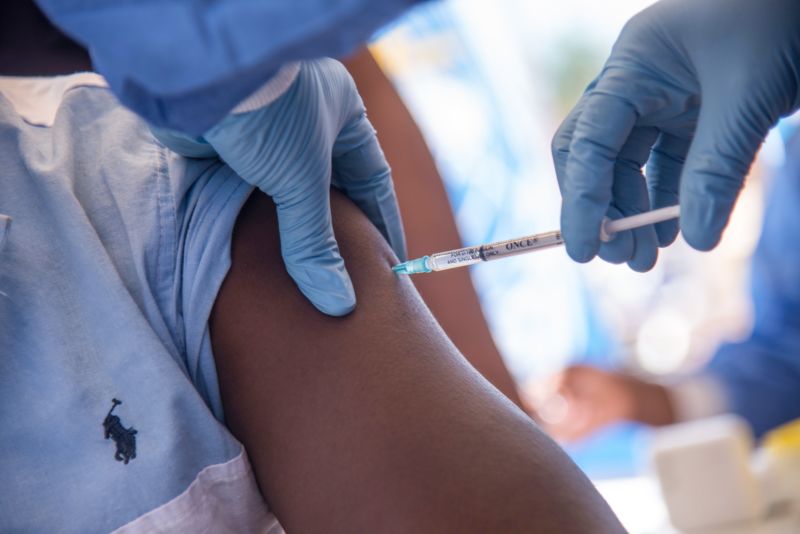
With more than 7,500 doses of an experimental vaccine against Ebola, health officials today began a vaccination campaign to try to thwart the latest outbreak of the deadly virus in the Democratic Republic of the Congo.
According to the World Health Organization, the campaign will start with healthcare workers operating in areas affected by the outbreak. Then officials will focus on a “ring vaccination” strategy, which targets people who have had contact with someone with a confirmed case of Ebola, as well as people who have had contact with those contacts. (This creates rings of vaccination around each case, hence the name). These defensive social circles ensure that those most vulnerable to contracting the virus are protected while also preventing the spread of the virus from the most likely sources. The same strategy was critical during the campaign in the 1960s and ‘70s to eradicate smallpox—the only human disease that has ever been successfully wiped out.
The Ebola-vaccination campaign will take place in the DRC’s northwestern Equator Province (Province de l’Équateur), where there have been 46 confirmed, probable, or suspected cases, including 26 deaths, as of May 18. Officials have already identified 600 contacts and contacts of contacts of cases. Nearly all cases and contacts have been in the remote town of Bikoro. But officials counted four confirmed cases in Mbandaka, a provincial capital with more than a million residents. This has raised concerns about the potential for the outbreak to explode.The more than 7,500 doses of vaccine already in the DRC are enough to cover approximately 50 rings of 150 people, the WHO notes. An additional 8,000 doses are on their way to the country, arriving in the next few days.
The experimental vaccine—rVSVΔG-ZEBOV—has not been approved by relevant regulatory authorities, but the WHO has given it the greenlight under an expanded access/compassionate-use protocol. The organization has reason to be optimistic that the vaccine will squash the outbreak.
Trial by fire
The vaccine is a live, chimeric virus capable of replicating in cells. It has the backbone of the relatively harmless vesicular stomatitis virus, which tends to infect cattle and only causes mild disease in humans. This engineered virus also carries the code for Ebola’s glycoprotein. This is a protein that hangs on the outside of Ebola viruses and allows them to invade and infect human cells. On the vaccine virus, the protein can prompt the human immune system to develop protective responses against the real Ebola.
In early work, rVSVΔG-ZEBOV protected mice, hamsters, guinea pigs, and non-human primates from Ebola. In 2015, an international team of researchers conducted trials of ring vaccination in Guinea and Sierra Leone, vaccinating nearly 6,000 within 117 rings. The results suggested that the vaccine was generally safe and 100-percent effective at preventing Ebola. None of those vaccinated developed Ebola virus disease, whereas there were 23 cases among contacts in the trial who were either not vaccinated or received a delayed vaccination.
Despite high hopes for the vaccine in this outbreak, the ring campaign won’t be easy to pull off in such a remote area of the DRC. “Implementing the Ebola ring vaccination is a complex procedure,” Dr. Matshidiso Moeti, WHO regional director for Africa, said in a statement. “The vaccines need to be stored at a temperature of minus 60 to minus 80 degrees centigrade, and so transporting them to and storing them in affected areas is a major challenge.”
So far, WHO, local health authorities, Médecins Sans Frontières (MSF aka Doctors Without Borders), and other partners have established an air bridge and have used helicopters and motorbikes to get around and deliver supplies. They’ve also transported the vaccine in containers that maintain sub-zero conditions for up to a week and have set up freezers in Bikoro and Mbandaka.
As officials scramble, they hope the efforts are enough. “We need to act fast to stop the spread of Ebola by protecting people at risk of being infected with the Ebola virus, identifying and ending all transmission chains, and ensuring that all patients have rapid access to safe, high-quality care,” Dr. Peter Salama, WHO deputy director-general for Emergency Preparedness and Response, added in a statement.
reader comments
200